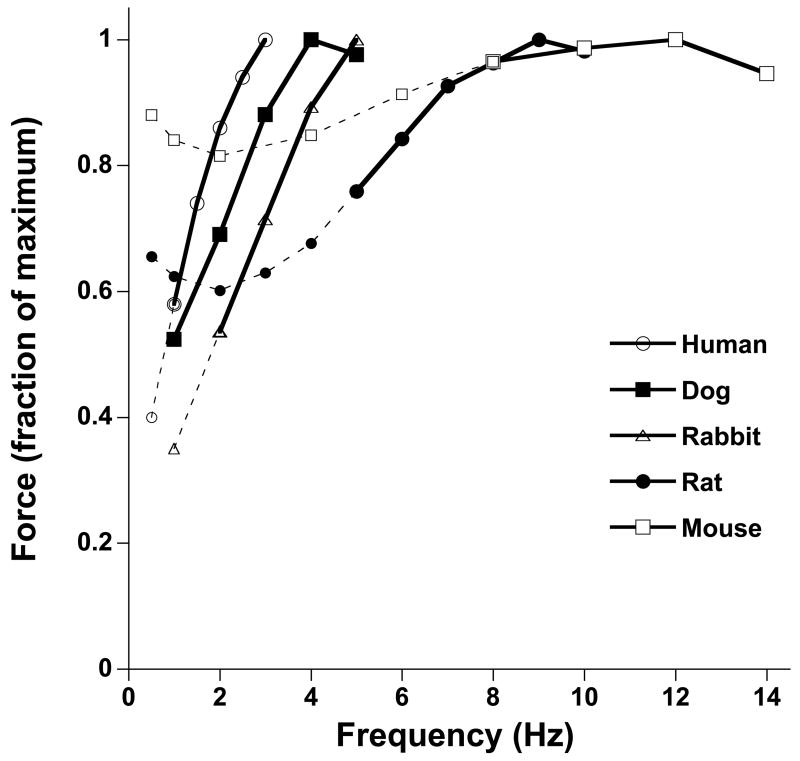Figure 1.
Comparison of the force frequency relationships in various species. All data are representative averages obtained in isometric contractions of small and thin ventricular trabeculae at 37 °C under near identical conditions (n=4–12/species). Within their respective in vivo frequency range (solid lines), the force frequency relationship is positive in all species, but the enhancement of force upon increase in frequency is much more pronounced in larger mammals compared to small rodents. Outside the in vivo frequency range, a flat or negative relationship can be obtained depending on the frequency range studied. In human, dog, and rabbit, the relative increases in force within the in vivo range are similar (nearly 100%) so contractile force generally doubles between resting and exercise heart rate, whereas in the rat the increase is only about 50%, and in the mouse only about 10%.

